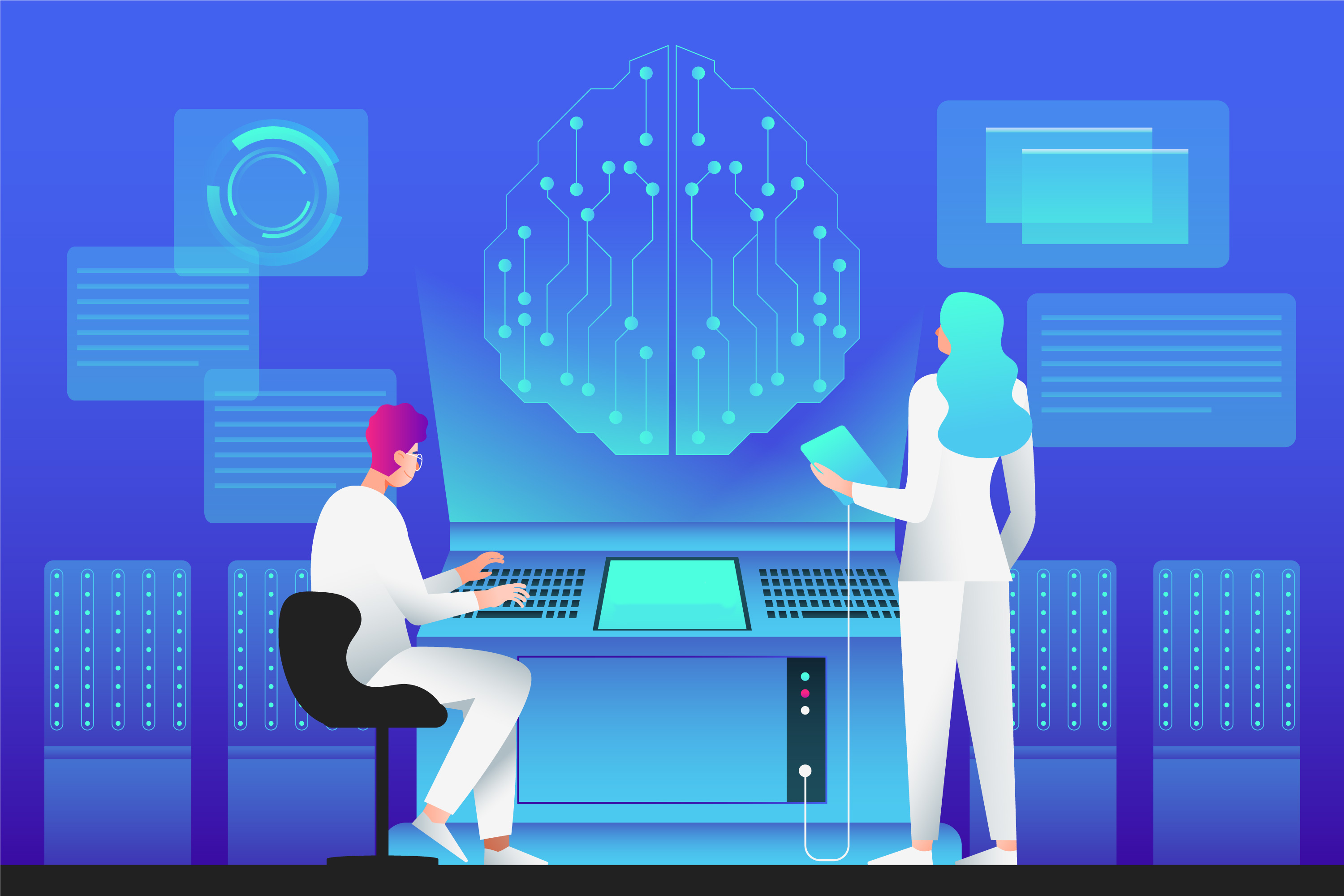AI - Paanch, Pachchis & Navasi
If you have ever tried to learn the German language, you would be well aware of the confusion of “die, der, das”. A very similar confusion happens in Hindi counting. A large number of people commit mistakes when counting unnyasi (79) and navasi (89) and tend to interchange them quite often. So what is the point? The point is the title of this article. Navasi OR Eighty Nine might be the years in waiting when AI actually takes over the managerial role from humans in lots of jobs. I think that it will take another ‘paanch’ (5) years for AI to start executing what humans are doing (a lot of it is already being done) and it will take another pachchis (25) years for AI to become operational and executing work in large number of sectors and become mundane. We can call it a stage of “AI executable” jobs.

Harware becomes the key
Although the development of AI has been going on for quite some time, it has taken big strides only after the giant leaps in GPU development and progress. Machine learning became an essential part of the ecosystem with people trying to train lots of models on capable GPUs. This was unprecedented as it gave rise to new possibilities. There was a time when Neural networks were secondary to other AI algorithms and heuristics but all of that changed because of the growth in the hardware capabilities in GPU. This has always been the case where development in hardware has triggered massive development in the field of software. This meant that people could experiment into undiscovered data systems and concepts of theoretical computer science would make inroads into reality.
Progress
Among all the different facets of AI, Natural Language processing has been the most intriguing and the research area for a very long time. Research work and tangible implementations date back to the 1960s. One such experiment is the ELIZA which was a NLP program created and experimented a very long time ago and was Doctor script of sorts. The focus on NLP kept on increasing over the years and there have been numerous such experiments and implementations contributing to improve systems across the board. Of course, the commercial value came in only when the conversation AI made its way into areas like customer support, telephonic conversations and robotic systems.
Chronology and future of Mundane AI
We are in an era where NLP is becoming omnipresent and we will see more and more systems adopting chatbots, voice bots and other technologies to provide support and automate systems. This would mean that lots of such jobs will be taken away and people will have to metamorphosize into different areas of expertise. That is how evolution happens and humans adjust to growing times. So instead of being delirious or fearful of what AI can do, we will have to make adjustments and look to roles where we can adapt to changing systems. There was an era when all calculations happened manually, then the era of calculators and then smartphones and soon we will be in an era of voice based calculations. Our brains will become more and more dependent on the semiconductors or nanotech attached to our bodies in the form of wearables but we will have to adapt to that change and improvise, and soon supervise.
There will come a time when AI systems will become part of almost everything we do. Of course, this part of technology will be intended to improve our lives and we should be positive about that always. This would mean we would live in a hybrid world where AI would execute a lot of our daily requirements. With human resources becoming expensive throughout the globe, it would be necessary to add systems which would aid us in daily chores. That is the positivity it will bring to our lives and that should be the focus of technology going forward. This will be the real stage of the “AI executable” lifestyle we will be living very soon.
References never lie
Moving forward, the next stage might be of systems managing other systems and making sure that automation becomes part of daily livelihoods. A lot of movies have shown this but we all know movies are just works of creativity laying the foundation for a different world of imagination. It reminds me of one of the lawsuits between Samsung and Apple. In one of the hearings, Samsung presented the existence of the tablet in the 1968 movie “2001: A Space Odyssey” as a precedent. This shows that movies have always been ahead in imagining the future and technology has followed. Many Sci-fi movies gave references of AI over the years but the one movie which felt very realistic and achievable was “HER”. The movie talks about an AI operating system which tries to fill in the void of a lonely man. That seems to be the most probable outcome in the next NAVASI (89) years.
Imperfections
The biggest menace I have experienced working with so many non techies is ASSUMPTIONS. It is important to understand that any action or change done to a pre-decided goal will always alter the timeline of delivery of work. Most bigger companies have a set process because they want to mitigate the risk of changes and alteration of deadlines. The process takes control of building the software and eventual delivery of the product. But in reality, when a new platform or software is built, the founder is too focused on creating the best product as the first version. In turn, a lot of changes are being done without any plan. This leads to a lot of technical debt inside the product code and eventually a low quality software. Ideally, even addition of a small horizontal line should be discussed with the dev team to avoid any impact on deadline or quality of the software.
All systems have fallacies and imperfections and AI at large, has a lot of them. All models we train in AI have confidence parameters which clearly shows that the people developing them don’t have 100% confidence in their systems. But this will change with time and the simple analogy can be that even a road bridge contractor doesn't have utmost confidence on how long the bridge he built will last. So a lot of work is done in life based on confidence and trust and AI is no different. On the same lines, NLP systems have been built on conventional techniques and predominantly on the codes have been written mostly focused on the ambiguous grammar of English language. This has meant that NLP systems don’t understand the nuances of other different languages and the semantics still have to be built.

The other problem would be that native languages are losing their originality over the years due to various reasons. This is the other reason, a big difference between the 25 and 89 years for AI to become a larger factor overall will happen, in my opinion. The human population will be transitioning during the next 30 years and will be on a decline statiscally. This would mean dying cultures, languages and semantics. Not all of this will be captured by the digital systems and hence, they will fail to pass on. It also means that the AI will make slow progress as will the humans but normalization will come in due course.
Only the '+VE FUTURE'
Whatever be the case, we have to move forward and we will. We should adore and adapt the developments in technology and AI and the future. AI will never be able to feel the adrenaline rush of a 100m race or the emotions in Vallam Kali (Snake boat race in Kerala) or the feelings generated watching a blockbuster. Humans are creating AI and which would mean AI will have understanding limitations of humans. It will take eons for AI to transgress that whenever that happens, we should hope it happens for the positive side.
Be ready for the Purple Pill
Anand Bora